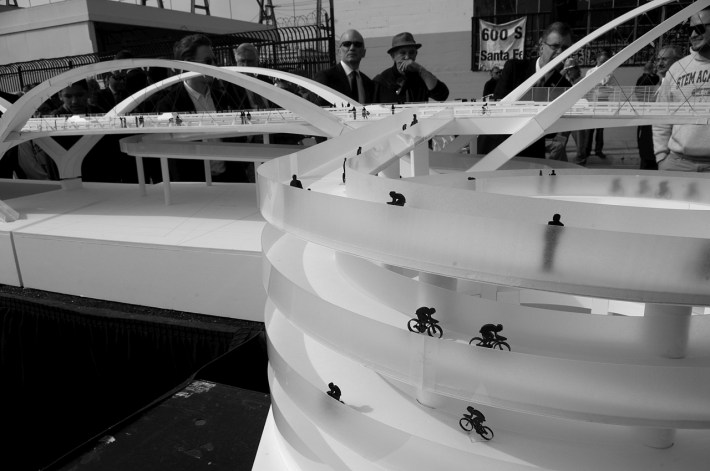It is now nearly the end of July.
The suggestion made at the February groundbreaking for the 6th Street Viaduct that estimates that the bridge would be closed for demolition in July were "aggressive" has proven more than true. The closure of the existing bridge will come no earlier than October of this year, and demolition will begin shortly thereafter.
Even so, things are apparently moving along. Representatives from the Sixth Street Viaduct Replacement project have been making the rounds at neighborhood council meetings in both Boyle Heights and the Arts District lately, offering updates on the projects.
When asked if the presentations would be made public, staff pointed me to the website, saying they had recently posted some maps and a new fact sheet.
The updates themselves are not particularly informative.
As seen in the map above, improvements to intersections expected to handle detoured traffic have been underway since May and will continue through August, on the west side of the river, and through October, on the east. The changes include upgrades to lighting and traffic signals, and the reconstruction of the corners for improved pedestrian access.
The 12 intersections targeted for improvements -- down from 20 in the original plans -- are meant to facilitate the traffic circulation pattern seen below.
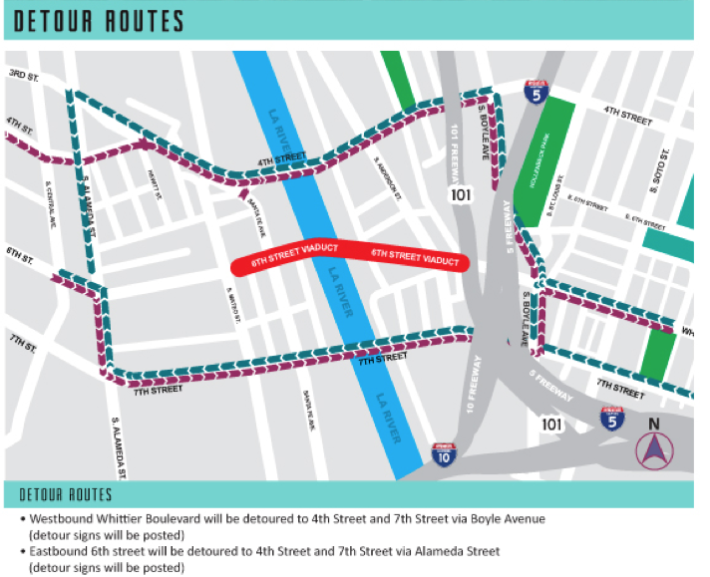
For drivers, the closure will represent an inconvenience, slowed commute times, and, most likely, more crowded crawls along streets like Mateo, Alameda, Whittier, or Boyle.
For pedestrians and cyclists, the closure represents a more significant change. Those that used 6th St. will likely switch to using 4th, as the 7th St. bridge, with its many on and off ramps, is very uncomfortable to cross. And while 4th is a lovely crossing and was recently repaved, no accommodations were made for cyclists or to slow the often fast-moving traffic and no improvements were made to its narrow sidewalks. So, the next few years of waiting for the 6th St. Viaduct to be completed may be a little harrowing for some of us.
But it does look like there is a sliver of hope for those cyclists that survive the construction period
The most recent project fact sheet states that patrons of the $420 million bridge project can look forward to "protected Class I bike lanes."
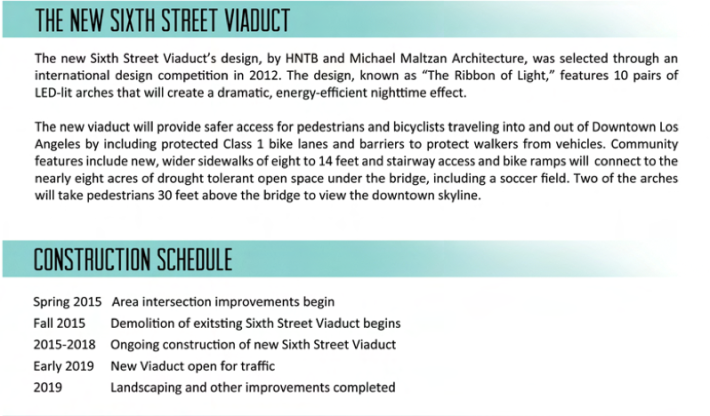
That's new.
Although representatives working on the bridge assured me cyclists' needs would be taken into account, original renderings of the bridge from two years ago included no bike lanes at all.
The incredible 65' model built by Michael Maltzan's team last year included fake cyclists happily hugging the pedestrian barrier/gutter, but no protected lanes.
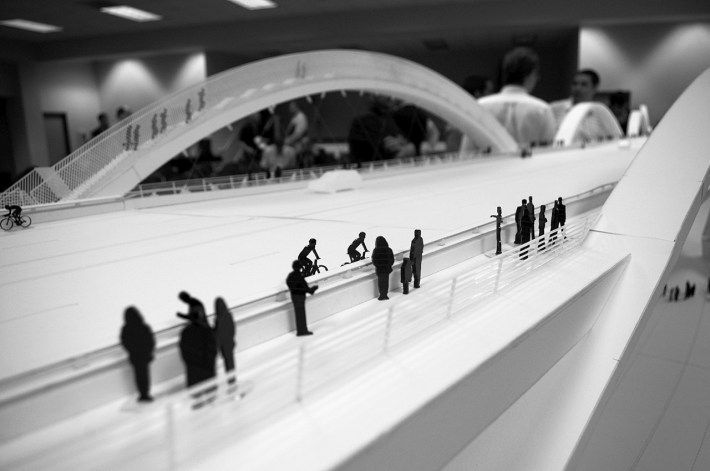
And, on several occasions, I was told there was no money in the budget for a protected lane.
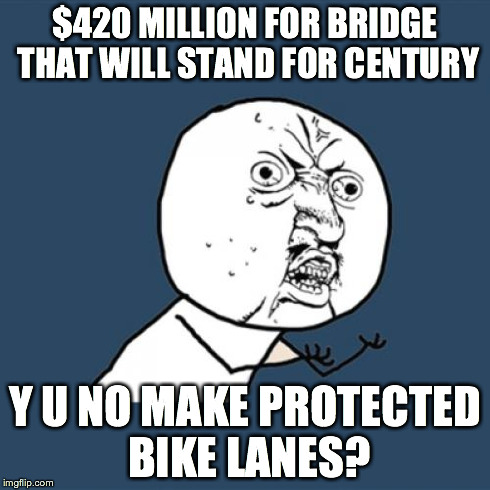
The omission made no sense.
How could Mayor Eric Garcetti, champion of Vision Zero, speak so glowingly of the opportunity the project presented for the city to champion a new approach to streets and transportation and to “change the way we move as people change the way they move” while overlooking the protection of cyclists?
Especially when cyclists featured so prominently into some of the design elements of the bridge, like the spiral ramp (seen below) intended to connect cyclists and pedestrians to the river bed and community below?

So, it is comforting to see that cyclists have not been forgotten in writing.
The form in which their protection will materialize, however, remains unclear. At the groundbreaking ceremony, I did hear the suggestion that plastic bollards might be the solution, given their relative low cost.
It does seem rather ridiculous to create a soaring work of architecture only to cheapen it with plastic bollards, so I'm hoping that the protection will come in a more substantial form. And one that actually serves as protection.
We'll update you when we learn more.
For now, track updates at the project website, here. For previous coverage on the project, see here, here, and here.

